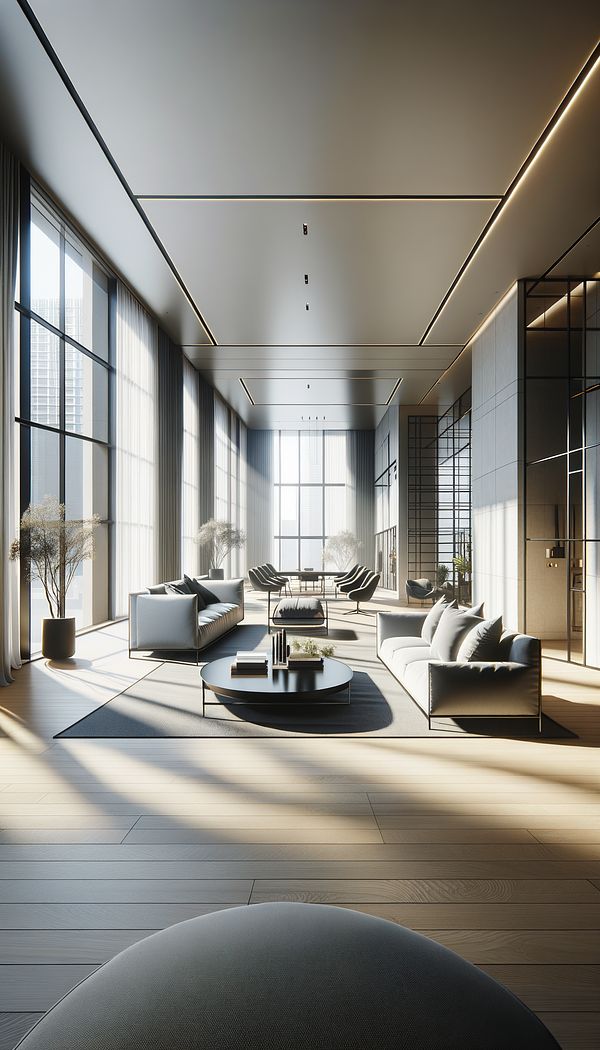What is Contemporary?
Contemporary refers to what is current and popular in interior design at any given time.
Description
Contemporary interior design is an ever-evolving style that reflects what is considered to be fashionable and current. Unlike styles fixed in a particular time period, contemporary design is fluid, keeping up with ongoing trends and incorporating new advancements in materials, technology, and art. Its hallmark is the commitment to reflect the present era's tastes and lifestyle preferences, making it a dynamic and adaptive design choice.
The beauty of contemporary design lies in its ability to blend elements from various styles and periods, creating a fresh and unique aesthetic. It often prioritizes simplicity, clean lines, and a monochromatic color palette, sprinkled with bold and unexpected uses of color as accents. Textures and shapes play a significant role, with a mix of natural and manufactured materials contributing to diverse tactile experiences. Spaces designed in a contemporary style are functional, uncluttered, and emphasize open layouts that allow for visual fluency between different areas.
Despite its inclination towards the modern, contemporary design distinguishes itself by prioritizing comfort and practicality. This results in spaces that are both stylish and livable, catering to the needs of today's lifestyles. As such, contemporary interior design can continually adapt to include the latest innovations in sustainability, smart home technology, and ergonomic furnishings, ensuring its relevance in the years to come.
Usage
examples of contemporary interior design include open-plan living spaces with minimal architectural elements, furniture with clean lines and subtle curves, and the strategic use of art to inject personality and color. Lighting fixtures in contemporary spaces often have sculptural qualities, combining functional illumination with artistic expression.
FAQs
-
How does contemporary design differ from modern design?
Contemporary design is based on what is popular and current, making it fluid and ever-changing, while modern design refers to a specific historical design movement that originated in the early to mid-20th century and emphasizes minimalism and function.
-
Can contemporary design incorporate elements from other styles?
Yes, contemporary design often includes elements from various styles and periods. Its versatility allows for a mix that reflects the current trends and personal preferences of the homeowner.
-
Is contemporary design the same worldwide?
While contemporary design has global influences and common trends, regional elements and cultural influences can vary, resulting in unique interpretations of what is contemporary in different parts of the world.
-
Is contemporary interior design expensive?
The cost can vary widely depending on the materials, furnishings, and artwork selected. Contemporary design prioritizes function and simplicity, which can be achieved at different budget levels.
-
How can I keep my contemporary interior design relevant over time?
Focus on creating a flexible space with high-quality, timeless pieces and allow for easy updates through accents like throw pillows, artwork, and decorative objects. This approach can help your space evolve with current trends.
-
Are sustainability and eco-friendly practices part of contemporary design?
Yes, contemporary design often embraces new innovations in sustainability and eco-friendly materials, reflecting a growing trend towards environmentally conscious living spaces.
Practical Application
When embracing contemporary design, consider starting with a neutral color palette and simple, streamlined furniture. Allow the space to breathe by avoiding clutter and select statement pieces, whether in art, lighting, or decorative objects, to inject personality. Be open to incorporating smart home technology and sustainable materials to align with contemporary trends, enhancing both the functionality and aesthetic appeal of your space.
-
Design Styles478 articles
-
Furniture Types599 articles
-
Lighting111 articles
-
Decorative Techniques322 articles
-
Materials & Textiles360 articles
-
ArabesqueAn intricate pattern of interlaced lines, often incorporating floral and geometric motifs.
-
Fan PatternedFan patterned refers to a design motif that resembles the shape and spread of a hand-held fan.
-
AnthemionAnthemion is a design motif consisting of a radial cluster of palm leaves or floral patterns.
-
TripodA tripod is a three-legged support device.
-
FarmhouseFarmhouse is a design style that blends rustic and modern elements to create a cozy, welcoming atmosphere.
